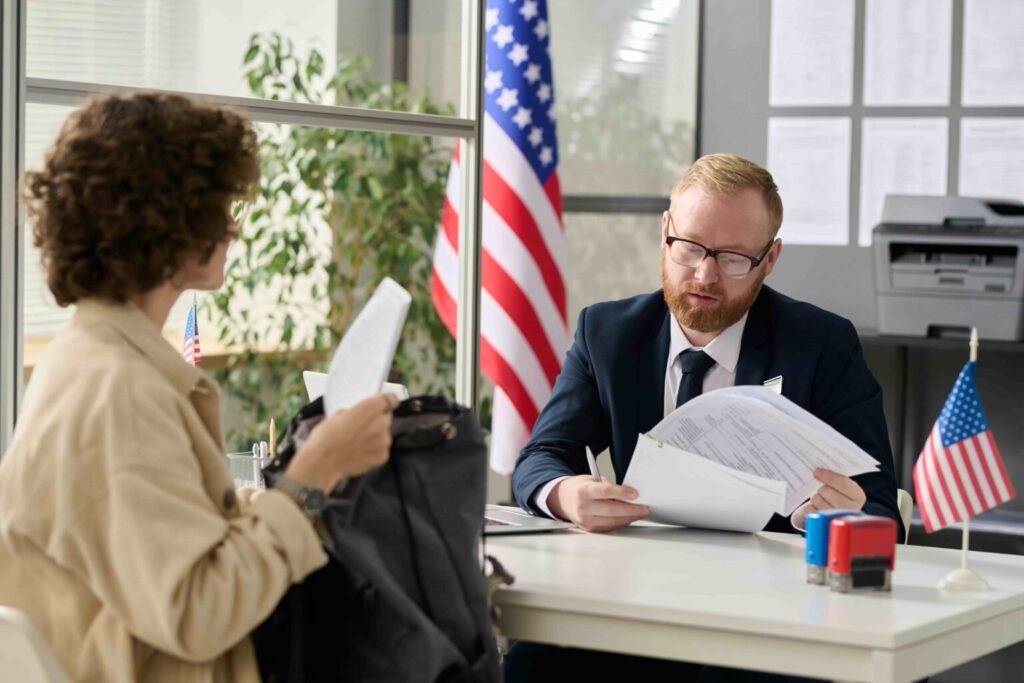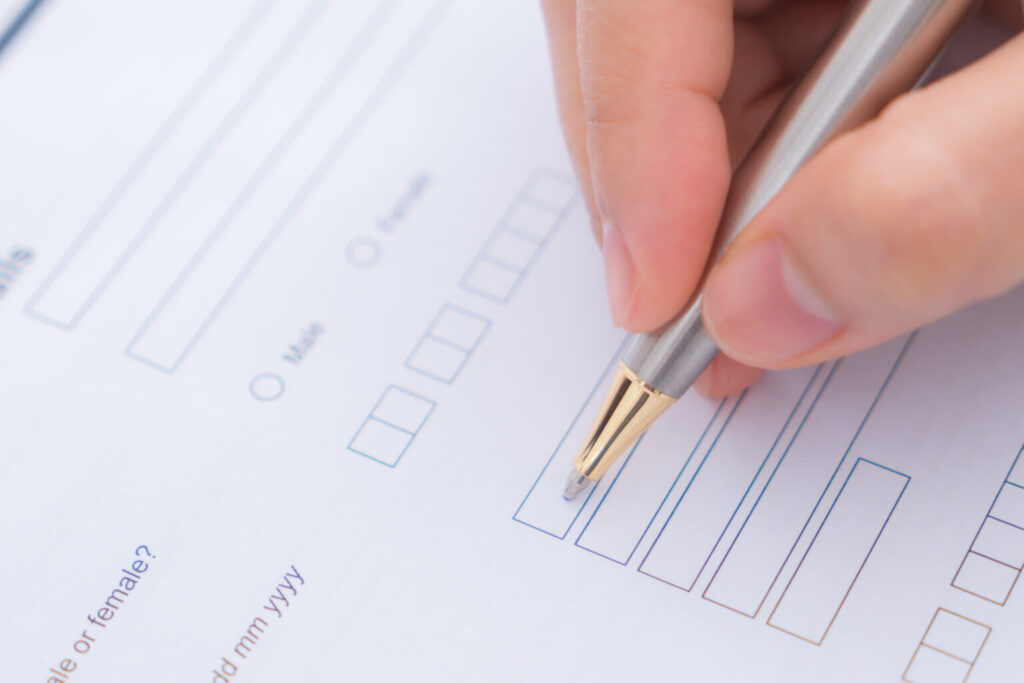United States of America Student Visa
F1 visas are the most popular nonimmigrant student visas that allow foreigners to study in U.S. universities or colleges certified by the Student and Exchange Visitor Program (SEVP). The students are enrolled in a full-time course that culminates in a degree, diploma, or certificate from accredited institutions.
The duration of F1 visa is dependent on the length of the course. Students are expected to complete the course specified in their I-20 form ( Certificate of Eligibility issued by accredited colleges or universities for international students). Once their course is completed, students have up to 60 days to apply for a work authorization Optional Practical Training (OPT).
Outside the United States, F1 visas are granted by U.S. embassies and consulates, while changes to the status and extension of the stay may be possible within the United States.

- A valid passport.
- Digital photo of the applicant taken in the last six months, according to the U.S. visa photo standards.
- Information regarding the previous five trips to the United States and the international travel history in the last 5 years.
- A resume or CV outlining the applicant’s educational details and current and previous work history, if any.
Any details regarding the travel itinerary if planned. - Any additional information if prompted regarding the intended purpose of the visit.

Supporting Documents
- Documents outline your educational details, which have been submitted while enrolling in the program. It includes the official transcripts.
- Financial documents which have been provided while enrolling into the program.
- Standardized test scores of the necessary tests like GRE, IELTS, TOFEL, SAT, or GMAT.
During the application process, our expert guides will assist you in filling out all the necessary documents, making the necessary payments, and compiling all the documents required for the visa interview. We focus on providing a personalized, comfortable experience by following up and providing timely updates to the applicants regarding the ongoing process. Our expert coaches are available to guide the applicants by conducting mock visa interviews to get them acclimated with the process and further ease up the applicant.
What Are The Steps To Apply For A U.S. Student Visa (F1 Visa)?
Applying To A Program And Obtaining I-20 FORM:
To apply for an F1 student visa, the applicant must first enroll in a full-time program in an institution accredited by the Student and Exchange Visitor Program (SEVP). SEVP is a U.S. governing body that certifies that the given institution is lawfully eligible to run with all the required resources. Once the applicant has been accepted into the program, the university issues an I-20 form to students.
- SEVIS ID/Number of the applicant.
- Start and end date of the course.
- Financial sources for the applicant to support themselves during their stay.
- Details regarding the intended program of study.
- Tuition fee/cost of attendance.
- Personal details of the applicant.
The I-20, Certificate of Eligibility for Nonimmigrant Students, outlines the course of study along with students’ details and financial modes through which students will be supported during their stay in the U.S. The information given in the I-20 form by the applicant will be registered in the Student and Exchange Visitor Information System(SEVIS). The data registered could include :
The applicant must submit documents outlining the student’s source of funding to attend the program. The cost of tuition will be mentioned in the I-20 form. Various documents could be shown as a proof of the financing like:
- Payslips of the current and past employment, if any.
- Bank statements of the last 3 years.
- Tax records of the previous 3 years.
- Any information regarding scholarships is granted to the applicant.
- If the applicant will be sponsored by someone staying in the U.S., then. The applicant must submit a form I-134, along with an Affidavit and Bank statements of the sponsor.
- Though not mandatory, paying a year’s worth or a semester fee can indicate readily available funds.
- If the applicant supports the education through a loan, then a ” Letter of Approval” for the loan from the bank is necessary.
Along with financial documents, the student must provide educational documents like transcripts and official scores of the standardized tests like GRE, GMAT, TOFEL, or IELTS.
The I-20 is an important document that needs to be carried by the applicant while traveling to the U.S. The information provided in the I-20 should be accurate.
The information provided in the I-20 will be registered in the Student and Exchange Visitor Information System (SEVIS). The applicant must pay the SEVIS I-901( SEVP processing and maintenance charge) fee as part of the visa application process. The costs can be paid through their payment portal. The payment receipt of the I-901 fee is required to be produced during the visa interview.

DS-160 is a visa application that must be filled out while applying for a nonimmigrant student visa (F1). The DS-160 form requires information related to your personal details of the applicant, educational details, employment history & additional security-related questions.
The applicant must provide a digital photo taken from the application submission date in the last six days. Once the application is successfully submitted, a confirmation page with a barcode is presented, which must be printed and produced during the visa interview.
Visa application cost: USD 185.
Once the necessary payments are made, and all the documents required to apply for an F1 visa have been compiled, the next step is to locate the U.S. embassy nearest or of the applicant’s choice and schedule an interview. The U.S. consulates can be present in different states across the country. The availability of slots can vary depending on the embassy’s location, season, and visa type.
New students can apply for F1 visa 120 days before the start of the course, while the student is allowed to enter the United States only 30 days before the course.
Attending The Visa Interview:
Applicants will be interviewed by the consular office designated by the U.S. government. Through the interview and examining various details provided in the DS-160, the officer will determine whether the student is eligible for a visa.
The applicant must show strong ties to the home country using financial resources with an intent to return once the course is finished. The F1 visa is usually valid up to 60 days beyond the course’s end date, and the students must leave the U.S. if there aren’t any extensions.
Once the interview is completed, the applicant will be notified whether they will be granted a visa or not. Sometimes the visa consular can ask for additional supporting documentation to complete the process.

We can help applicants through the F1 visa process through expert guidance and assistance. From filling out forms to scheduling the visa interview, we provide various services to ease the process for the applicants and provide a hassle-free experience. Our expert coaches are available to conduct mock interviews and groom the applicant’s communication and social skills while boosting their confidence to tackle the actual interview with ease.
Where Should I Check My Eligibility For A U.S. Student Visa?
The United States is one of the most popular destinations for academic pursuits among students. Studying in the U.S. can be a broadening and enriching experience for an individual. Their academic resources and a market filled with various job opportunities make the U.S. an ideal location for academic pursuits. The U.S. Student Visa offers the scope for a foreign national to pursue education in the U.S.
The General Requirements To Be Eligible For A U.S. Students Visa Includes :

A valid I-20 form outlines the applicant’s personal and financial details. The document states that the applicant has been successfully enrolled in a program from an institution accredited by the Student and Exchange Visitor Program(SEVP). The student must be enrolled in a full-time course to be eligible for F1 visa.
The I-20 is issued to an applicant once the school/college reviews all the official documents submitted and determines the applicant is eligible to be admitted into the institution. The documents can be academic, like Transcripts related to the previous education history and financial statements to show that the applicant can support themselves during their stay.
The applicants must also meet the English proficiency test scores required by the university. The usual standardized tests for English proficiency are IELTS and TOFEL. Along with the English proficiency test scores, applicants might also be requested to submit their GRE OR GMAT scores based on the program they apply to.
The I-20 is a necessary document to be produced during the visa interview.
Sufficient Funding
The applicant must prove that they can support themselves financially during their stay in the United States. While filling out the I-20 form, the applicant is required to show their source of funding, and they might also be asked to produce the necessary documents during the visa interview.
The source of funding can be shown using various ways like Bank Statements of the last 2-3 years, Tax records of previous years, Payslips if working, or the ‘Letter of Approval’ from the bank if the applicant has applied for a loan. These documents need to be produced if asked during the visa interview.
Valid Passport
A valid passport with an expiry date 6 months beyond the course’s end date is required.
After all the documents above are compiled together, the applicant has to schedule and attend an interview in a U.S. embassy, where the officer will decide the candidate’s eligibility for a student visa.
From selecting universities based on your parameters to guiding with mock interviews and scheduling the visa interview, we are here to guide and assist you throughout the process. Our expert guides and coaches assist you and provide a hassle-free experience with regular follow-ups and updates.
Student Work Visa Explained:
After meeting the requirements, students are eligible to work in the United States using the Optional Practical Training(OPT). The F1 student must work in the field related to their academic major.
- Students will be allowed to work up to 20 hours part-time on campus once authorized.
- Students may be eligible to work up to 40 hours full-time when the classes are not going on or during the vacation if the university approves it.
- The student may be eligible to work off-campus if the university authorizes it.
The F1 students have 60 days to leave the United States if the student cannot maintain valid visa status. Students can extend their stay by obtaining OPT or transferring to another school to continue their education and legally carry a valid visa status.
Initially, the OPT allows the student to legally stay and work in the U.S. for 12 months after graduation. To apply for an OPT, the applicant needs to request the Designated School Official ( DSO) at the academic institution and file a Form I-765 which is an Application for Employment Authorization with the USCIS, accompanied by supporting documents and the necessary fees.









